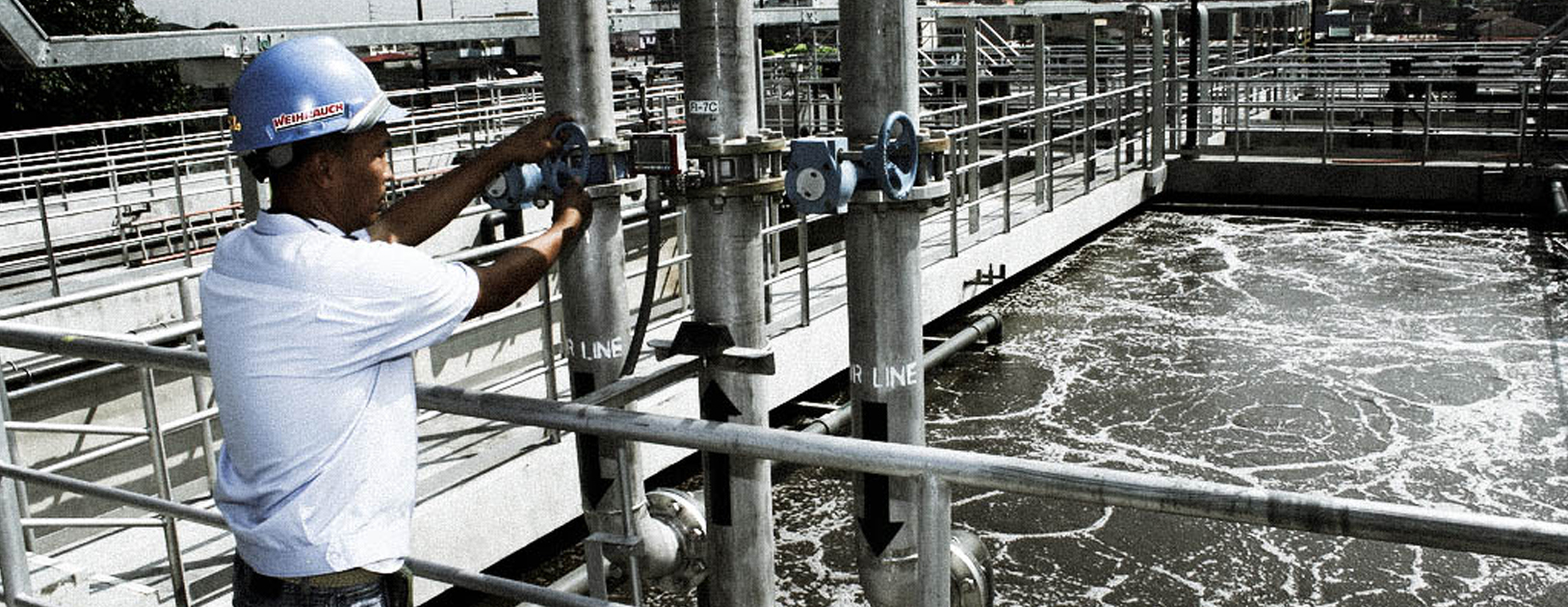Institutional and Technological Reforms in Urban Wastewater Management: Story of Malaysia

A NEW RESEARCH REPORT BY AMBARISH KARUNANITHI
SANITATION
Ambarish Karunanithi visited Malaysia’s wastewater management system and interacted with various authorities to write this report.
What is the research report about?
The poor management of urban wastewater across Indian cities is deteriorating river water quality, resulting in the chronic outbreaks of various water-borne diseases, leading to a high infant mortality rate, among other problems.
Although there are existing policy mandates, it is necessary to re-frame the existing wastewater policy framework, and plan for incremental changes. The Swachh Bharat Mission (SBM), launched in 2014, aims to eradicate the practice of open defecation and the AMRUT scheme, launched in 2015, aims to improve wastewater infrastructure in urban India – both of which will positively impact the quantum of water-borne diseases.
However, even as both these schemes are under implementation, the missing link is an enabling policy framework. To understand what such enabling policy frameworks should look like, Ambarish decided to analyse how a developing nation like Malaysia achieved a well-structured wastewater management system over a period of time.
Understanding the Malaysian wastewater management system
With the practice of unsafe sanitation systems being rampant and high levels of river water pollution, the situation in Malaysia was not too different from that in India before 1950. By 2017 however, Malaysia has successfully developed policies and implemented best management practices for effective urban wastewater management leading to an overall improvement of river water quality. This is evident from the following facts:
70% of the Malaysian population is covered under the improved wastewater management system.
30% of the population has on-site sanitation systems like septic tanks, pits etc.
About 20-30% of the on-site sanitation systems are de-sludged and treated before disposal, while the rest are de-sludged as and when requested.
As a result of these measures, the life expectancy at birth for the average Malaysian man rose from 55.8 years in 1957 to 73 in 2005, while infant mortality dropped from 80 deaths per every 1,000 infants, to 5 per 1,000 infants for the same period. Malaysia offers a great learning experience for Indian cities that face similar challenges.
The evolution of an effective wastewater management system in Malaysia has been a result of interesting experiments. These include the introduction of scheduled de-sludging, tariff, cost recovery mechanism, and adoption of new technologies in an incremental manner in the country’s urban wastewater management system.
Uniquely, the Malaysian system has an integrated service provider for the management of wastewater in sewered and non-sewered areas. In other words, septic tank de-sludging, faecal sludge transport and treatment are handled by the same service provider who is also responsible for the management of sewerage networks and treatment systems.
All these reforms by Malaysia have resulted in an improved wastewater management system, which can provide valuable lessons for India and other developing nations to improve wastewater management and sanitation.
What are the key findings?
The major findings discussed in the report are:
Advantages and dis-advantages of federalisation:
Federalisation resulted in strong legislative arrangements, giving legal basis to initiatives like focused funding and large-scale investment in infrastructural development.
While wastewater management became a federal government matter, water supply remained a state government matter, thereby breaking the synergy between them. Owing to the inter linkage between water supply and waste water generation, dividing their management responsibilities between federal and state governments impacted the integrated service delivery approach negatively.
Development of a very strong regulatory framework in urban wastewater management with clear roles for funding, asset-management, enforcement, operation and maintenance.
Privatisation of the wastewater management sector, which enabled the development of effective guidelines and led to the standardisation of protocols for planning, designing, construction, operation and maintenance of wastewater management systems.
Appropriate technological developments, introduced gradually, providing the space and time for learning and adaptation.
Non-sewered urban sanitation approaches:
Standardisation of on-site sanitation design and installation procedures.
Scheduled de-sludging, though practiced for a limited time, proved to be very effective in maintaining the on-site sanitation system. Long-term sludge logistics and safe treatment methods were established during this regime.
How was the research conducted?’
The findings mentioned in the research report are the result of analysis of data collected from various primary and secondary sources. The major primary data for this report was collected from various Malaysian wastewater service provider agencies and officials in the National Regulatory Authority. The secondary data was obtained from online resources.
Conclusion
Wastewater management in Malaysia has evolved at a rapid pace over the last two decades. The sewage treatment trend has changed from a basic system that involved the use of rudimentary methods, such as bucket latrine in 1950 to the use of safe and advanced mechanised treatment plants in 2015.
This evolution has taken place largely due to stakeholders’ demand for a cleaner and safer environment for the public and an overall increased awareness about the need for a sustainable future. Nevertheless, there is still substantial reliance on non-network systems in urban areas, albeit not in the main Kuala Lumpur metropolis.
However, wastewater management practices have been facing customer and regulatory requirements that are increasingly more stringent as civil society becomes more sophisticated in its demand for a healthier environment to live in.
The report gathers essential information about wastewater management in Malaysia, for use to policy-makers in India and elsewhere, as it demonstrates the successes and challenges of an integrated approach for sewered and non-sewered wastewater management.
The full research report can be accessed here.
This research is part of the Scaling City Institutions For India: Sanitation project at the Centre for Policy Research.


